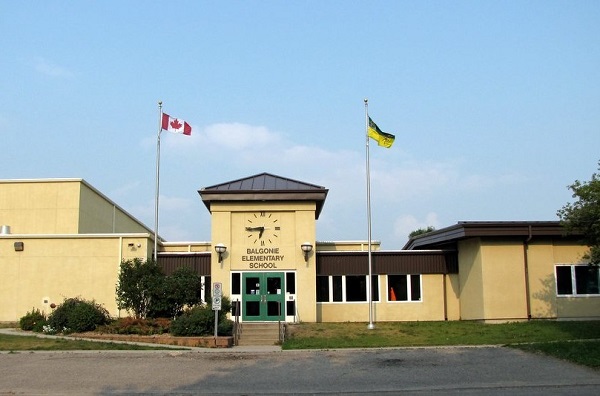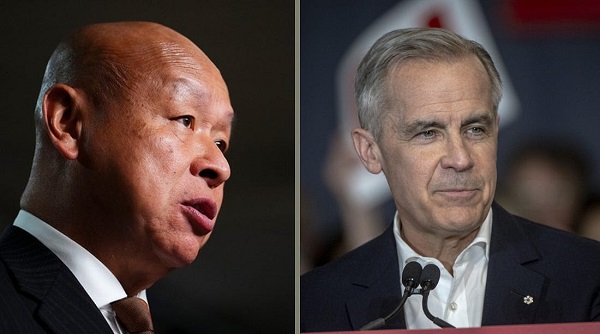National
Irate parents demand answers from Saskatchewan school allowing males to use girls’ locker rooms

From LifeSiteNews
Girls have stopped changing for gym class at Balgonie Elementary in rural Saskatchewan while the school defends its actions, telling one student who felt uncomfortable that ‘she can change in a different room by herself.’
Canadian parents are outraged after learning their children’s school allowed two gender-confused biological males claiming to be female full access to the Grade 7 girls’ changing room.
In September, a female Grade 7 student from Balgonie Elementary School in rural Saskatchewan told her parents she was not comfortable with having to share changing rooms used for gym class with biological males.
Since the start of the school year, two gender-confused students have been allowed access to the girls’ locker room, as per the Western Standard, which broke the story.
As noted in the report, one parent, who remains anonymous, said that after her daughter raised the issue of the biological males using the girls’ locker room, saying she “felt uncomfortable,” she was told “she can change in a different room by herself.”
The parents were not pleased with the response and contacted the school principal, the Prairie Valley School Division (PVSD) superintendent, and the school board as well as Saskatchewan Premier Scott Moe.
The parent noted that after two weeks of “auto-responding with legal policies and procedures,” he finally met with the superintendent as well as a board member.
He said the meeting went “exactly as I thought,” adding that all that was said was that they “have done what they need to do according to the human rights and charter of rights and freedoms.”
Not pleased with the answer, the parent then emailed school officials on September 24, noting, “So, in short, you’re saying if there’s biological males that identify as females in the school, then our biological females have no more rights? Cause that’s what it seems like.”
He then said due to the biological males using the girls’ change room, many students have simply stopped changing for gym class and called the whole ordeal “not acceptable.”
The parent also was offended by an email from school Vice Principal Sarah Slwyka that read, “Students are expected to use the change room in an appropriate manner.”
He said in reply, “Correct me if I’m wrong,” adding, “since when is it appropriate to expose my 12-year-old daughter along with all the other biological females in that class to penis?”
The parent then said that school officials were acting in a cowardly manner to do the right thing because they were “pretending this is ok just to save your jobs.”
He said that gender-confused students should be the ones using a gender-neutral washroom.
The parent did get a reply from PVSD learning superintendent Lorrie Anne Harkness. However, it was a defense of the school’s actions.
Saskatchewan Minister of Education Jeremy Cockrill, who like the rest of his party is up for re-election, has promised that a re-elected Saskatchewan Party would “ensure that all public, separate, francophone, and independent schools in the province have policies in place to ensure that change rooms are safe and private places.”
As reported by LifeSiteNews, LGBT indoctrination targeting kids has been on the rise in Canada and worldwide, which has led to Canadians fighting back in protest.
Earlier this week, LifeSiteNews reported that a leading female gender ideology activist, who also worked as a school counselor, has been charged with grievous sexual offenses involving a minor.
Some provinces, such as Alberta, New Brunswick, and Saskatchewan, have in recent months proposed legislation that would strengthen parental rights.
The Alberta government will soon be introducing legislation aimed at strengthening parental rights as well as limiting minors being able to undergo “gender reassignment” surgery.
2025 Federal Election
Chinese Election Interference – NDP reaction to bounty on Conservative candidate

NDP MP Jenny Kwan blast the Liberals for defending Paul Chiang’s call to kidnap a Conservative candidate and hand him over to China.
2025 Federal Election
Poilievre on 2025 Election Interference – Carney sill hasn’t fired Liberal MP in Chinese election interference scandal

From Conservative Party Communications
“Yes. He must be disqualified. I find it incredible that Mark Carney would allow someone to run for his party that called for a Canadian citizen to be handed over to a foreign government on a bounty, a foreign government that would almost certainly execute that Canadian citizen.
“Think about that for a second. We have a Liberal MP saying that a Canadian citizen should be handed over to a foreign dictatorship to get a bounty so that that citizen could be murdered. And Mark Carney says he should stay on as a candidate. What does that say about whether Mark Carney would protect Canadians?
“Mark Carney is deeply conflicted. Just in November, he went to Beijing and secured a quarter-billion-dollar loan for his company from a state-owned Chinese bank. He’s deeply compromised, and he will never stand up for Canada against any foreign regime. It is another reason why Mr. Carney must show us all his assets, all the money he owes, all the money that his companies owe to foreign hostile regimes. And this story might not be entirely the story of the bounty, and a Liberal MP calling for a Canadian to be handed over for execution to a foreign government might not be something that the everyday Canadian can relate to because it’s so outrageous. But I ask you this, if Mark Carney would allow his Liberal MP to make a comment like this, when would he ever protect Canada or Canadians against foreign hostility?
“He has never put Canada first, and that’s why we cannot have a fourth Liberal term. After the Lost Liberal Decade, our country is a playground for foreign interference. Our economy is weaker than ever before. Our people more divided. We need a change to put Canada first with a new government that will stand up for the security and economy of our citizens and take back control of our destiny. Let’s bring it home.”
-

 Business2 days ago
Business2 days ago28 energy leaders call for eliminating ALL energy subsidies—even ones they benefit from
-

 2025 Federal Election2 days ago
2025 Federal Election2 days agoCarney’s Cap on Alberta Energy Costing Canada Billions
-

 Business2 days ago
Business2 days agoTrump Tariffs are not going away. Canada needs to adapt or face the consequences
-

 Economy1 day ago
Economy1 day agoSupport For National Pipelines And LNG Projects Gain Momentum, Even In Quebec
-

 Health2 days ago
Health2 days agoDr. Pierre Kory Exposes the Truth About the Texas ‘Measles Death’ Hoax
-

 Business19 hours ago
Business19 hours agoDOGE discovered $330M in Small Business loans awarded to children under 11
-

 Business2 days ago
Business2 days agoWhy a domestic economy upgrade trumps diversification
-

 COVID-1917 hours ago
COVID-1917 hours ago17-year-old died after taking COVID shot, but Ontario judge denies his family’s liability claim

